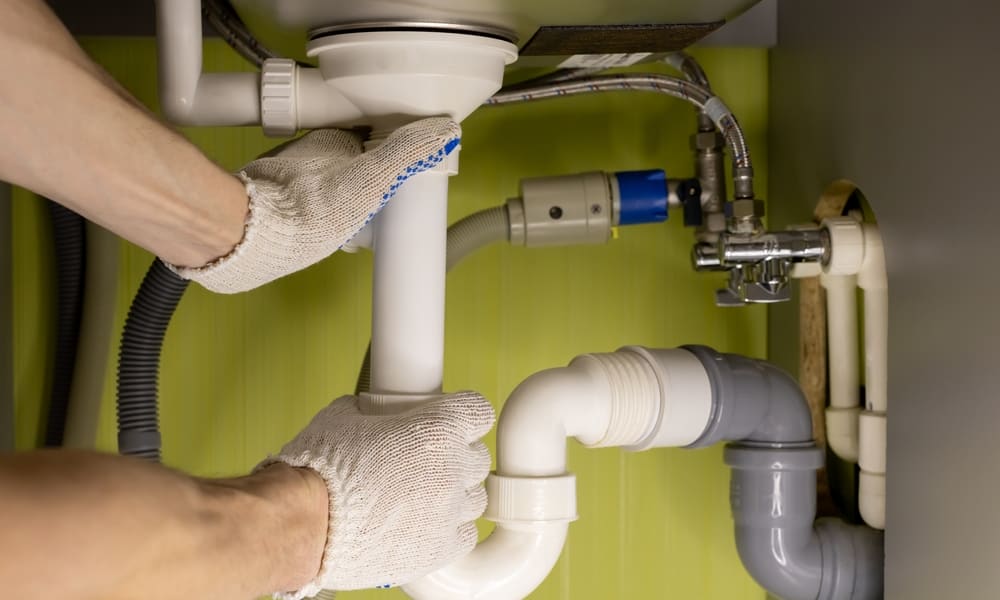How to Unclog Your Drain Fast Without Damaging Your Pipes
A clogged drain can cause more than just frustration—it can lead to expensive repairs and unpleasant odors if left untreated. Whether it’s a slow kitchen sink or a completely blocked shower, knowing what causes the blockage and how to handle it can save time and money. This guide breaks down simple DIY methods and when it might be time to call a professional.

What causes drains to clog in the first place?
Drain clogs can occur for various reasons, often depending on the location and usage of the drain. In kitchens, the primary culprits are usually food particles, grease, and oil that accumulate over time. Bathrooms, on the other hand, frequently suffer from hair, soap scum, and mineral buildup. Other common causes include foreign objects accidentally dropped down the drain, tree root intrusion in outdoor plumbing, and the gradual accumulation of debris in pipes. Understanding these causes can help you take preventive measures and choose the most appropriate unclogging method.
How can you unclog a drain with standing water?
When faced with a sink or tub full of standing water, it’s essential to approach the problem carefully to avoid making the situation worse. Start by removing as much of the standing water as possible using a cup or bucket. Once the water level is manageable, try using a plunger designed for the specific drain type (sink or toilet plunger). Create a tight seal around the drain and plunge vigorously for about 20-30 seconds. If this doesn’t work, you can try using a mixture of baking soda and vinegar. Pour 1/2 cup of baking soda down the drain, followed by 1/2 cup of white vinegar. Cover the drain with a plug or rag and wait 15 minutes before flushing with hot water.
What are the best home remedies for drain clogs?
Several effective home remedies can help clear minor clogs without resorting to harsh chemicals. One popular method is the aforementioned baking soda and vinegar solution, which creates a natural fizzing action that can break down many types of blockages. Another option is to use boiling water, which can be particularly effective for grease-based clogs. Simply boil a kettle of water and carefully pour it down the drain in stages, allowing each pour to work for a few minutes before the next. For more stubborn clogs, a mixture of salt and hot water can create a mildly abrasive solution that can help break down buildup. Remember to always use caution when working with hot water to avoid burns.
When should you use a plumber’s snake or plunger?
A plumber’s snake (also known as an auger) and a plunger are two essential tools for tackling more persistent clogs. A plunger should be your first line of defense for most clogs, especially in sinks and toilets. Ensure you’re using the correct type of plunger for the job – cup plungers for sinks and flanged plungers for toilets. If plunging doesn’t resolve the issue, it’s time to consider using a plumber’s snake. This tool is particularly useful for reaching deeper clogs or removing solid obstructions. When using a snake, insert it slowly into the drain and turn the handle to navigate bends in the pipe. Once you feel resistance, continue turning to break up or retrieve the clog. If you’re uncomfortable using a snake or if it fails to clear the blockage, it may be time to call a professional.
What are the signs your drain needs professional cleaning?
While many clogs can be resolved with DIY methods, some situations call for professional intervention. Look out for these signs that indicate a more serious problem:
-
Multiple drains in your home are clogging simultaneously
-
Foul odors emanating from drains, even after cleaning attempts
-
Gurgling sounds coming from drains or toilets
-
Water backing up in unexpected places (e.g., sink water appearing in the shower)
-
Persistent slow draining despite your best efforts to clear the pipes
These symptoms could indicate issues beyond a simple clog, such as main line blockages or sewer line problems, which require specialized equipment and expertise to diagnose and fix.
How can you prevent recurring drain blockages?
Preventing drain clogs is often easier and more cost-effective than dealing with them after they occur. Here are some proactive steps you can take to keep your drains flowing freely:
-
Use drain screens or strainers in sinks and showers to catch hair and debris
-
Avoid pouring grease or oil down kitchen drains; instead, collect and dispose of them separately
-
Run hot water through your drains regularly to help prevent buildup
-
Periodically clean your drains with a mixture of baking soda and vinegar as a preventive measure
-
Be mindful of what you flush down toilets – only human waste and toilet paper should be flushed
-
Consider having your drains professionally cleaned on a regular basis, especially if you live in an older home or have recurring issues
By implementing these preventive measures and addressing clogs promptly when they do occur, you can maintain healthy, functioning drains and avoid costly repairs down the line. Remember, when in doubt or faced with persistent issues, don’t hesitate to consult a professional plumber to ensure your plumbing system remains in top condition.




